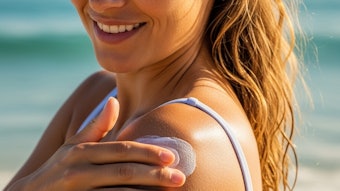
IFF showcases cutting-edge biotechnology capabilities with new-to-the-world hair conditioning ingredient AURIST™ AGC. Enabled by IFF’s Designed Enzymatic Biopolymers (DEB), AURIST™ AGC is a water-soluble, cationic, biodegradable biopolymer that combines the high performance, purity and consistency of synthetic conditioning polymers used today with the desired properties of natural polymers.
Unlike other conditioning biopolymers, AURIST™ AGC can form completely transparent formulations, even with anionic ingredients, and does not require pH neutralization. AURIST™ AGC improves combability in hair care formulations, is easy to formulate with and is readily biodegradable.
BENEFITS OF AURIST™ AGC
| IMPROVES COMBABILITY Compatible with a wide range of commonly used haircare ingredients, AURIST™ AGC can significantly improve wet and dry combability compared with incumbent technology. |
| EASY TO FORMULATE WITH AURIST™ AGC does not require pH neutralisation. It is supplied in the format of an odorless liquid that is cold processable |
| READILY BIODEGRADABLE Designed for biodegradability to meet increased consumer and regulatory pressure to replace certain synthetic polymers. |
| TRANSFORMATIONAL SCIENCE Enabled by IFF’s proprietary Designed Enzymatic Biopolymers (DEB) technology that allows creation of new-to-the-world class of polysaccharides that have better performance, higher purity, and design flexibility greater than synthetic materials. |
Designed Enzymatic Biopolymers (DEB) is a biocatalysis process that creates tailored polysaccharides from the enzymatic polymerization of glucose from sucrose. With DEB, novel biopolymers can be designed and customized to meet desired performance needs and product specifications for specific applications, all while being biodegradable and biobased. Consequently, this allows for novel, efficacious biopolymers that can rival and even surpass the performance of traditional synthetic polymers.
Disclaimer:
The above paid-for content was produced by and posted on behalf of the Sponsor. Content provided is generated solely by the Sponsor or its affiliates, and it is the Sponsor’s responsibility for the accuracy, completeness and validity of all information included. Cosmetics & Toiletries takes steps to ensure that you will not confuse sponsored content with content produced by Cosmetics & Toiletries and governed by its editorial policy.














